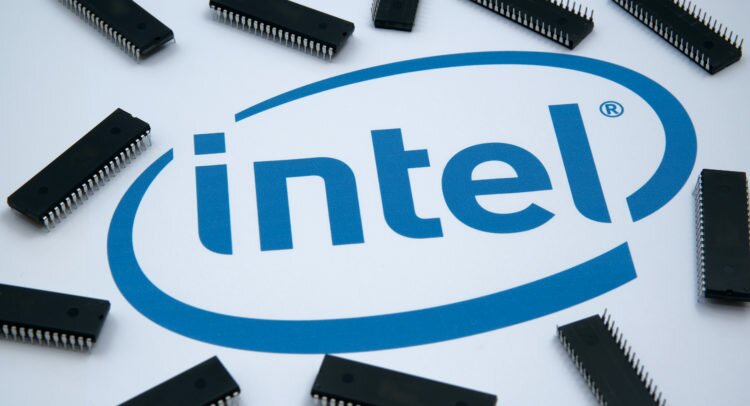Intel Stock: The Market Still Isn’t Convinced

Intel (INTC) shares are close to hitting another multi-year low this week as US equity markets near a technical bear market. While the shares have traded as low as $40, I am neutral on the stock.
Intel’s Q1 results weren’t bad, with a small beating on earnings and revenue, though investors were disappointed to hear weak guidance for Q2. Additionally, this week, China reported sharp declines in retail sales and industrial output as the CCP refused to deviate from its zero-COVID policy. China accounts for more than 25% of Intel’s total revenue, which could lead to further downward revisions in the coming quarters.
In recent years, Intel has struggled to compete effectively with the top semiconductor players. TSMC (TSM) notably outperformed Intel, as the company faced delayed product releases and slow chip development.
Management is now guiding the larger CapEx spend in the coming years to ramp up product development efforts and expand manufacturing around the world. Wall Street is guiding for free cash flow of $2.5 billion in fiscal 2012 and $4.3 billion in fiscal 2013. Management is actually guiding to negative free cash flow of between $1 billion and $2 billion in FY22.
This reduction in free cash flow is the result of larger CapEx spending in the coming years. Management expects CapEx to be about 35% of revenue in the coming years, with a goal of reducing that figure to about 25% over the long term.
Intel also aims to reach a 20% FCF margin by 2026, which should achieve FCF of $19 billion by 2026. Fortunately, Intel has the financial resources available to attempt a turnaround. While Intel has long-term debt of $37.24 billion, it has enough cash ($38.7 billion) and operating income to maintain a dividend while running a historically large CapEx budget.
Insiders seem confident of Intel’s plan as they have bought roughly $6 million worth of shares over the past year. In May alone, CEO Patrick Gelsinger and new CFO David Zinsner bought more than $500,000 worth of Intel stock.
investment for turnaround
Increased CapEx spending is what investors want to see, although other semiconductor makers are also adding to their CapEx budgets in the coming years. TSMC is guiding a CapEx budget of $40 billion to $44 billion. This is a huge increase from its $30 billion CapEx spend in 2021.
By the time Intel catches on, they (Intel’s competitors) will also have made the process development leap. While the market for semiconductors is tight, with high margins and a large backlog, it risks spending more if Intel doesn’t meet its goals.
Management claims that Intel will exceed TSMC’s manufacturing capabilities by 2025. However, Intel has previously disappointed with delays in product releases and manufacturing. So Intel has an uphill battle to restore credibility with investors.
It is likely that there will be a change to some degree, although investors need to determine whether they are willing to wait several years for their average return to be similar to that of an index.
Management has 24 concurrent construction projects around the world and has an ambitious goal of developing five nodes in four years. Under previous management, far less ambitious targets were missed at a time when Intel was losing market share.
However, I would argue today that Intel has better tools and partnerships to support its goals, especially its continued partnership with ASML. Intel ordered its first TWINSCAN EXE:5200 EUV (lithography machine) from ASML in January, which will have a capacity of 200 wafers per hour.
Across all of its segments, Intel expects total revenue to grow in the mid-high single digits over the next few years, followed by double-digit growth through 2025.
At Intel’s investor meeting in February, Zissner outlined his expectations for margin growth in the coming years. He also guided for Gross Margins to increase from 51%-53% in FY2012-24 to 54%-58% from FY2015.
Evaluation
Intel is estimated to be worth $177.6 billion. NTM EV/EBITDA is directed to remain at 6x, indicating that investor sentiment has subsided. Although that seems like a cheap valuation, Intel’s free cash flow is expected to be missing for several years.
From a cyclical perspective, semiconductor delivery times are still higher and it is expected that semiconductor manufacturers will see decent margins over the next few quarters as we are still mid-cycle.
An increasingly hawkish Fed is the main short-term risk for Intel, as the Fed may abandon any hope of a soft landing as it raises rates. If that happens, demand for the chips will gradually drop, allowing Intel to delay its free cash flow targets.
At current valuations, Intel receives a dividend of 3.3%, which is likely to be a contributing factor that prevents Intel from a complete valuation collapse if the current equity market sell-off intensifies.
Intel has received six buy ratings, 14 hold ratings and seven sell ratings in the last three months. An average Intel price target of $50.90 suggests 17.2% upside potential.
conclusion
I believe Intel will continue to see a slow sell-off. This will be followed by sideways consolidation in the coming years while investors await key milestones.
Discover new investment ideas with data you can trust.
Read full disclaimer and disclosure




